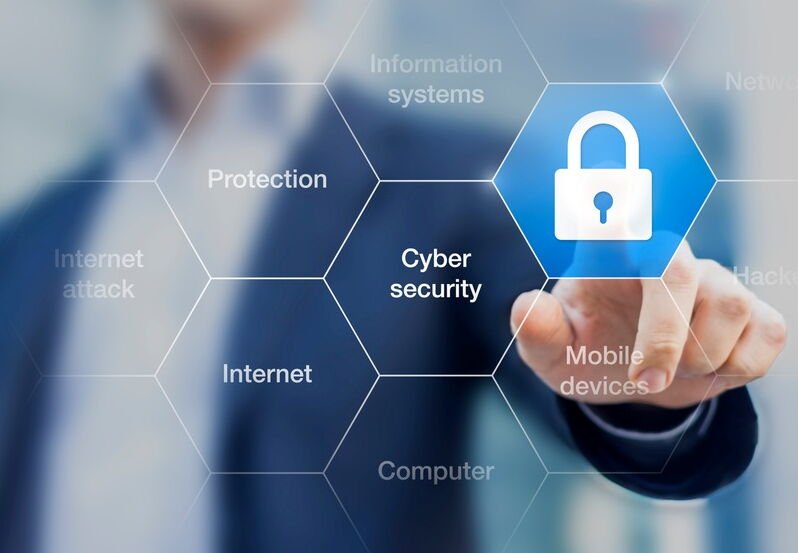Cybersecurity is essential in today’s digital world. Phishing, ransomware, and data breaches are on the rise, making firms of all sizes exposed to cyberattacks that might cost them money, reputation, and legal trouble. This article teaches you how to secure your business’s digital assets against cybercriminals.
Understanding the Cyber Threat Landscape
The first step in building a robust cybersecurity strategy is understanding the types of threats your business may face. Cyber threats can take various forms, including:
- Phishing Attacks: Fraudulent emails designed to steal sensitive information such as usernames, passwords, or financial details.
- Ransomware: Malicious software that locks access to critical files, demanding payment for their release.
- Distributed Denial of Service (DDoS) Attacks: Overwhelming a system with traffic to disrupt normal business operations.
- Insider Threats: Employees or contractors with access to sensitive data who may intentionally or unintentionally cause harm.
By understanding these threats, businesses can prioritize their cybersecurity efforts accordingly.

Who Needs Cybersecurity?
Every organisation that uses digital technologies, saves consumer data, or works online is subject to cybersecurity. Healthcare, banking, education, retail, and hospitality handle sensitive data and need excellent security.
Due to their lack of modern cybersecurity resources, SMBs are especially vulnerable. Remote work situations have increased the threat surface, making stronger security standards even more important.
Employee Training: The First Line of Defense
Your employees are the first line of defense against cyber attacks. In fact, many breaches occur due to human error. Regular cybersecurity training should be a top priority, ensuring employees understand how to:
- Identify phishing emails.
- Avoid opening suspicious attachments.
- Implement good password practices.
Simulated phishing campaigns can help assess employee awareness and improve vigilance. Educated employees are less likely to fall victim to scams and can better recognize potential threats.
Enforce Strong Password Policies
Weak passwords remain one of the easiest ways for cybercriminals to gain access to sensitive systems. To mitigate this risk, businesses should enforce strong password policies that require:
- A mix of uppercase and lowercase letters.
- Numbers and special characters.
- Password length of at least 12 characters.
Additionally, encourage employees to use password managers and enable Multi-Factor Authentication (MFA) for all critical accounts. MFA adds a layer of security by requiring multiple forms of identification to access sensitive data.
Keep Systems and Software Updated
Outdated systems are prime targets for cybercriminals who exploit known vulnerabilities. Regularly patch and update all software, systems, and third-party tools to ensure you are protected against the latest threats.
Automating updates can ensure critical patches aren’t missed, reducing the likelihood of a successful attack.
Use Multi-Factor Authentication (MFA)
MFA is one of the most effective ways to prevent unauthorized access to sensitive accounts, even if login credentials are compromised. By requiring users to provide more than one form of verification, MFA significantly strengthens your defenses.
Some common MFA methods include:
- Password + a one-time code sent to a mobile device.
- Biometrics (e.g., fingerprints or facial recognition).
- Security tokens.
Invest in Network Security
Securing your network is essential to preventing unauthorized access. There are several tools and strategies that can help safeguard your digital infrastructure:
| Security Tool | Purpose |
|---|---|
| Firewalls | Monitor and control incoming and outgoing traffic. |
| Intrusion Detection Systems (IDS) | Detect unauthorized access or suspicious activities. |
| Intrusion Prevention Systems (IPS) | Prevent malicious activities by blocking potential threats. |
In addition to these tools, segmenting your network to isolate sensitive data can help ensure that a breach in one area of your system doesn’t compromise your entire operation.
Regular Security Audits
Security audits are a proactive measure to identify weaknesses in your system before attackers can exploit them. Regular vulnerability assessments, conducted by internal teams or external experts, help uncover areas that need improvement.
Penetration testing, which simulates real-world cyberattacks, can further identify gaps in your defenses.
Backup Critical Data Regularly
Secure data backups are essential against ransomware and other assaults that lock or wipe sensitive information. To achieve a seamless recovery strategy, backup data should be maintained securely, ideally encrypted and offline, and restored frequently.
Test your backups often to verify their integrity and emergency readiness.

Develop an Incident Response Plan
Even with the most stringent security measures in place, no system is 100% invulnerable. Therefore, it’s crucial to have an incident response plan (IRP) in place. This plan should detail:
- The process for identifying and containing a breach.
- The steps needed to mitigate damage.
- The recovery procedures for restoring systems and data.
- Communication protocols for internal and external stakeholders.
A well-prepared team can reduce response times and limit the impact of a cyberattack.
Stay Informed About Emerging Threats
Remember that cyber dangers change, so be informed about new attack strategies and vulnerabilities. To stay current, subscribe to cybersecurity news, attend industry seminars, and join relevant online groups.
Keep informed to adjust your defences to new threats and maintain robust cybersecurity.
Consider a Cybersecurity Consultation
Cybersecurity is an ongoing commitment that requires expertise and continuous vigilance. Many businesses lack the resources or knowledge to implement advanced security measures, which is why consulting with a cybersecurity firm can be highly beneficial.
A cybersecurity consultant can:
- Perform a thorough audit of your current systems.
- Recommend tailored security solutions.
- Help develop an incident response plan.
- Provide training for employees.
Investing in professional cybersecurity guidance ensures your organization is protected against emerging threats and remains resilient in the face of potential attacks.
The Importance of Cybersecurity Insurance
In addition to preventive measures, businesses should consider investing in cybersecurity insurance. This can help cover the costs associated with a data breach or other cyber incidents, including:
- Legal fees.
- Public relations costs.
- Data recovery.
- Business interruption losses.
Cybersecurity insurance provides an added layer of financial protection, allowing businesses to recover more quickly after an attack.
Engage in Cybersecurity Awareness Campaigns
Cybersecurity is not just an IT concern—it’s a company-wide issue. Make cybersecurity awareness a part of your organizational culture by engaging employees in regular campaigns and discussions. Encourage safe online practices both at work and at home to reduce the risk of cybercrime.
Secure Your Supply Chain
Supply chain vulnerabilities are often targeted by hackers. If they have access to your sensitive data, suppliers and partners must be assessed for security. Ensure your vendors have excellent cybersecurity measures to prevent external attacks.
Protect Your Cloud Environment
As more businesses shift to cloud services, securing this environment becomes essential. Implement robust cloud security measures, such as data encryption, access controls, and regular security audits, to protect your business’s cloud-based assets.
Frequently Asked Questions
What are the common types of cyber threats?
Phishing, ransomware, DDoS attacks, and insider threats are common types.
How can I train employees for cybersecurity?
Offer regular training and simulated phishing campaigns to boost awareness.
Is Multi-Factor Authentication really necessary?
Yes, it adds a critical extra layer of protection for sensitive accounts.
What should be included in an incident response plan?
It should outline how to identify, contain, mitigate, and recover from an attack.
How often should I update my systems?
Regularly update systems, applications, and software to stay protected from vulnerabilities.







1 comment
I recently discovered the term ‘yimusanfnedi,’ which piqued my interest. It appears to hold a distinct meaning in different contexts! I would love to hear from others about their perspectives and experiences with yimusanfnedi. Let’s exchange insights and explore this topic together!
Comments are closed.